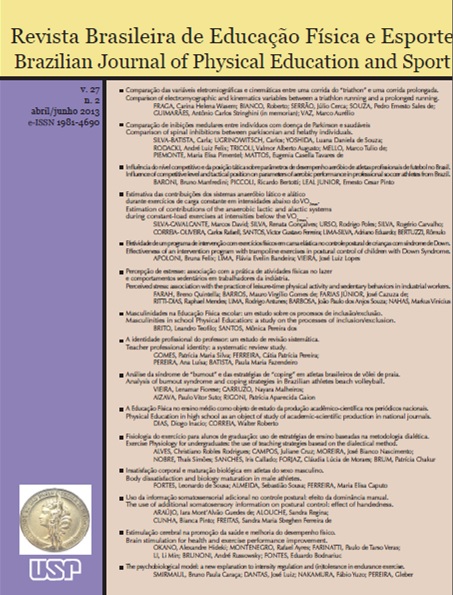Perceived stress: association with the practice of leisure-time physical activity and sedentary behaviors in industrial workers
DOI:
https://doi.org/10.1590/S1807-55092013000200007Keywords:
Stress psychological, Motor activity, Sedentary lifestyle, WorkersAbstract
The aim of this study was to analyze the prevalence and the association between physical activity and sedentary behaviors with higher perceived stress in industrial workers. For this purpose, we used a cross-sectional design in which participants were selected using a 2-stage sampling process among industrial workers in Pernambuco state (northeast of Brazil). Data were obtained by using a previously validated questionnaire (Lifestyle and Leisure Habits of Industrial Workers). Higher perceived stress was referred by 13.2% and 45.2% were inactive during leisure-time. The prevalence of workers who reported spending >;2 hours/day watching television was 31.8% and 57.4%, respectively, in week and in weekend days. It was observed, among men, a positive association between the TV-watching hours in week days with a higher perceived stress. It was concluded that the likelihood of referring higher perceived stress was greater among men exposed to sedentary behavior.Downloads
Download data is not yet available.
Downloads
Published
2013-06-01
Issue
Section
Sociocultural
License
Todo o conteúdo da revista, exceto onde está identificado, está licenciado sob uma Licença Creative Commons (CC-BY)
How to Cite
Farah, B. Q., Barros, M. V. G. de, Farias Júnior, J. C. de, Ritti-Dias, R. M., Lima, R. A., Barbosa, J. P. dos A. S., & Nahas, M. V. (2013). Perceived stress: association with the practice of leisure-time physical activity and sedentary behaviors in industrial workers. Brazilian Journal of Physical Education and Sport, 27(2), 225-234. https://doi.org/10.1590/S1807-55092013000200007


